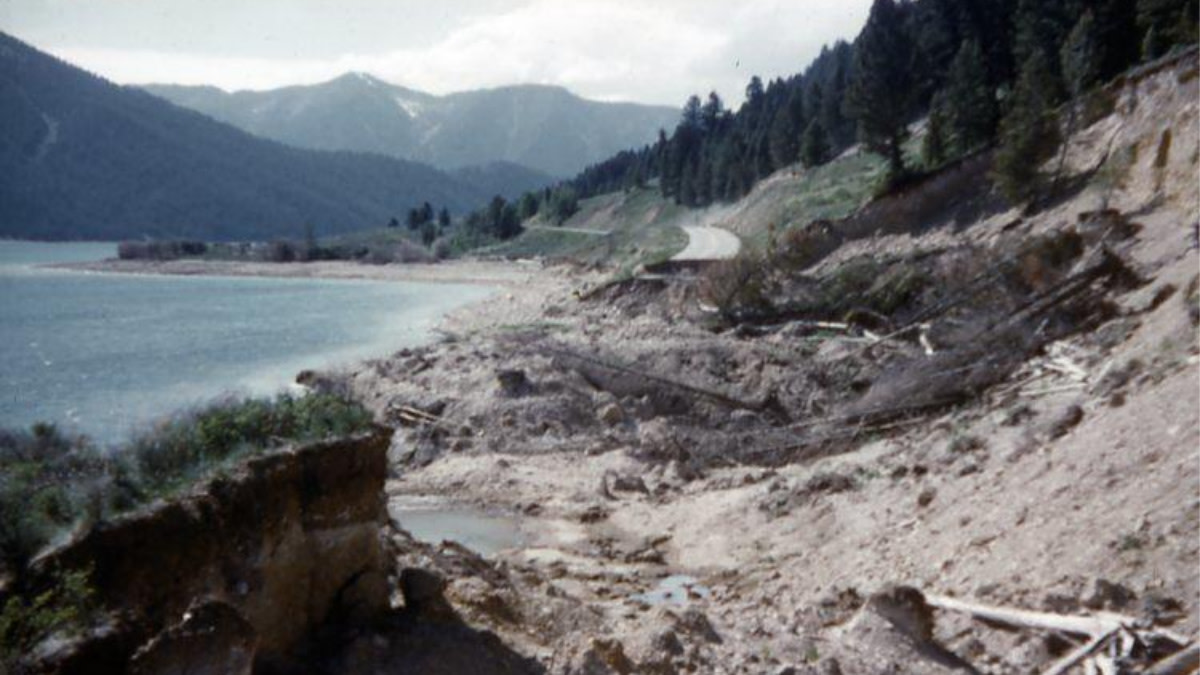
There’s a difference between book smart and bar smart. You may not be book smart, but this series can make you seem educated and interesting from a barstool. So, belly up, pour yourself a glass of something good and take mental notes as we look at the Yellowstone earthquake that shook the Rockies.
In the middle of the night on August 17, 1959, an earthquake shook Yellowstone National Park. The quake’s epicenter was Hebgen Lake, about 15 miles north of the park’s most popular entrance. With 21% of the year’s guests visiting that month, the timing was disastrous.
The quake measured 7.5 on the Richter scale, which is the largest ever recorded in the Rocky Mountains. It also generated one of the worst landslides in US history. An entire flank sheared off Sheep Mountain and swallowed everything in its path, including about a dozen people who are still buried under 100 feet of rubble. The slide came to a stop in the Madison River, carrying 80 million tons of soil, boulders, and trees, enough debris to dam the river and create Quake Lake.
“In the morning it was like we were in a new world,” said Joanne Gartland, a landslide survivor, in an interview with KXLH Helena. “Like we’d been in one world in the campground and somebody picked us up and put us on a different planet.”
The chaos didn’t end there, though. Several aftershocks ranging from 5.8 to 6.3 were recorded, with some locals reporting that it felt like the ground didn’t stop moving all night. The extreme seismic activity registered over 3,000 miles away in Puerto Rico and Hawaii.
Meanwhile, in Yellowstone, buildings swayed, bridges collapsed, and roads crumbled. Authorities and park staff evacuated lodges, cabins, and campsites, but many routes were impassible, making travel difficult. In some cases, unmaintained roads that had been abandoned for decades were opened just to get people out of the park.
Like the road system, the park’s geysers were completely altered. Prior to the quake, Old Faithful erupted every 60 minutes for one to two minutes at a time. Following the quake, the iconic geyser now erupts every 90 minutes for four to five minutes at a time. More than 160 new geysers sprang to life, as well.
No geyser was more affected by the quake than the Clepsydra Geyser near the Fountain Painting Pots. Before that night, it only erupted every three minutes. Since then, the geyser literally hasn’t stopped.
“We don’t believe that earthquakes can get much larger in this region,” said Mike Stickney, director of earthquake studies for Montana Tech, in an interview with KXLH Helena.
Wyoming, Idaho, and Montana all rank in the top seven most seismic states, with Yellowstone experiencing thousands of earthquakes a year. Most of them are minor (under 2.0) and aren’t even felt by visitors. Although earthquakes there are common, ones of the Hebgen Lake magnitude are as rare as Yellowstone’s beauty.
Feature image via USGS.





Conversation